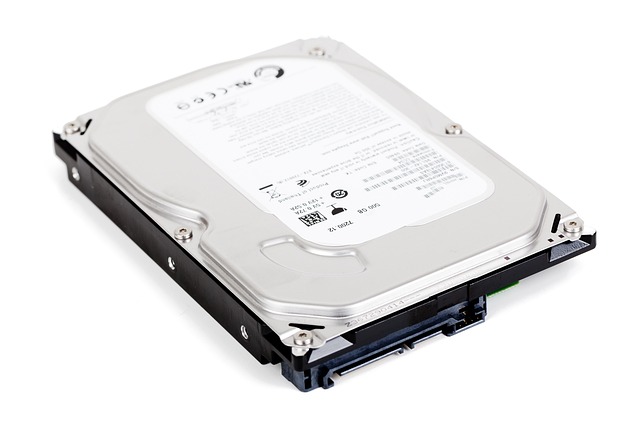Protecting financial data requires specialized strategies due to its sensitive nature and stringent regulatory demands. Accounting data backup is crucial for mitigating risks, with cloud redundancy emerging as a robust solution. In today's digital era, robust accounting data backup is essential to prevent severe consequences from data breaches or disruptions. Regular testing and refining of business continuity plans, including offsite storage and compliance with regulations like GDPR or PCI DSS, are vital to ensure data integrity, availability, and security for financial institutions.
In the highly regulated and sensitive realm of financial services, ensuring business continuity and disaster recovery for critical data is paramount. This article delves into the unique challenges of protecting financial data, emphasizing robust accounting data backup strategies as a cornerstone. We explore comprehensive disaster recovery planning, secure data storage, encryption techniques, testing methodologies, and regulatory compliance considerations specific to financial institutions. By understanding these elements, firms can safeguard their operations and maintain client trust in today’s digital era.
- Understanding the Unique Challenges of Financial Data Protection
- The Importance of Robust Accounting Data Backup Strategies
- Disaster Recovery Planning: A Comprehensive Approach
- Secure Data Storage and Encryption Techniques
- Testing and Refining Your Business Continuity Plan
- Compliance and Regulatory Considerations for Financial Institutions
Understanding the Unique Challenges of Financial Data Protection

Protecting financial data is a delicate task due to its sensitive nature and stringent regulatory requirements. Unlike general business operations, accounting data backup and recovery demand robust strategies that can mitigate potential risks. Financial institutions handle vast amounts of critical information, including transaction records, client profiles, and confidential financial details. Ensuring the integrity and availability of this data during disasters or cyberattacks is paramount.
The unique challenges in securing financial data include maintaining data archive services that are both secure and easily accessible. Cloud redundancy emerges as a powerful solution, offering businesses an extra layer of protection. By replicating data across multiple secure locations, these systems enhance business data protection, ensuring that even if one site experiences downtime or damage, the financial information remains safe and readily retrievable. This proactive approach is essential in today’s digital landscape, where data breaches can have severe consequences.
The Importance of Robust Accounting Data Backup Strategies

In today’s digital age, where financial transactions occur at an unprecedented pace, robust accounting data backup strategies are no longer a luxury but an imperative for businesses. The loss or corruption of sensitive financial records can lead to significant operational disruptions, legal complications, and financial losses. Therefore, organizations must implement comprehensive data protection measures that ensure the integrity, availability, and security of their accounting data. A well-designed accounting data backup strategy serves as a crucial line of defense against cyberattacks, natural disasters, hardware failures, and human errors.
Cloud-based Disaster Recovery Plans (DRPs) offer a scalable and flexible solution for effective data backup and recovery. By leveraging remote storage and automated backup monitoring, businesses can quickly restore their operations in the event of an emergency IT restore. This ensures minimal downtime and financial impact. Regular testing and maintenance of these strategies are essential to guarantee their effectiveness. Continuous backup monitoring enables organizations to detect and resolve issues promptly, further enhancing business continuity for sensitive financial data.
Disaster Recovery Planning: A Comprehensive Approach

Disaster Recovery Planning (DRP) is a comprehensive approach that ensures financial institutions can swiftly recover their sensitive accounting data and operations during or after a disruptive event. It involves creating robust strategies to safeguard and quickly restore critical information, such as encrypted backups stored in secure offsite locations. By implementing DRP, businesses can minimize downtime and financial losses, maintaining continuity in service delivery.
A key component of this process is file versioning, which allows for the tracking and retrieval of specific versions of essential data files. Combined with regular accounting data backup strategies, including encrypted backups, institutions can quickly revert to a stable state should any adverse events occur. This multi-layered protection ensures that financial records remain secure and accessible, enabling businesses to maintain their reputation and operational integrity.
Secure Data Storage and Encryption Techniques

In the context of sensitive financial data, securing information is paramount to ensure business continuity and mitigate potential disasters. One of the cornerstone strategies in this regard is implementing robust data storage methods. Organisations can safeguard their accounting data by leveraging offsite data storage solutions, which isolate critical records from on-premises risks. This ensures that even if a physical location experiences a catastrophe, the data remains accessible and secure.
Furthermore, encryption techniques play a pivotal role in fortifying data integrity. Advanced encryption algorithms transform readable information into unintelligible codes, protecting it from unauthorised access. By integrating these measures with file versioning and reliable data archive services, financial institutions can maintain comprehensive control over their records, ensuring both short-term accessibility during operations and long-term preservation for historical references.
Testing and Refining Your Business Continuity Plan

Testing and refining your business continuity plan is an iterative process that ensures its effectiveness in protecting sensitive financial data. Regularly simulating disaster scenarios allows organizations to identify gaps and weaknesses in their strategies. By testing, you can verify if your accounting data backup procedures are efficient, robust, and aligned with your recovery objectives. This involves backing up critical data to offsite storage facilities, ensuring redundancy and quick retrieval capabilities.
During these tests, it’s crucial to assess the performance of your data archive services, backup monitoring systems, and overall disaster recovery processes. Refining your plan post-tests could involve enhancing communication protocols between teams, updating recovery time objectives (RTOs), or implementing more secure offsite data storage solutions. Continuous improvement guarantees that when an actual disaster strikes, your financial institution is prepared to swiftly recover operations, minimizing potential losses and maintaining the integrity of accounting data.
Compliance and Regulatory Considerations for Financial Institutions

Financial institutions dealing with sensitive accounting data face stringent compliance and regulatory requirements. These regulations are designed to protect customer information and ensure business continuity in the event of a disaster or cyber-attack. Institutions must implement robust data backup strategies, including regular offsite data storage and cloud redundancy, to meet these standards. Effective emergency IT restore procedures are also crucial to quickly recover operations without disrupting financial services.
Compliance with data protection laws like GDPR or industry-specific regulations such as PCI DSS is not just a legal necessity but a key component in maintaining customer trust. Regular audits and testing of backup systems and disaster recovery plans are essential to demonstrate regulatory compliance and ensure the integrity and availability of accounting data.
